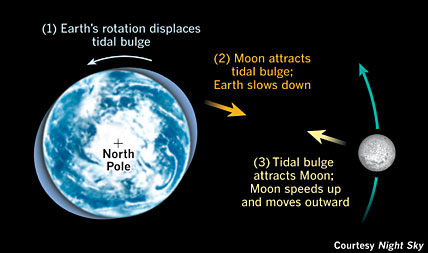December 20, 2005
Contacts:
Roger W. Sinnott, Senior Editor
855-638-5388 x146, [email protected]
Marcy McCreary, VP Mktg. & Business Dev.
855-638-5388 x143, [email protected]
Note to Editors/Producers: This release is accompanied by a publication-quality graphic; see details below.
The world's clocks are due to be reset on December 31st — by one whole second. That's because our planet Earth has not quite kept up the rotational pace it maintained in prior centuries. On the advice of astronomers, who use observations of stars to keep tabs on Earth's spin, the International Telecommunication Union has decided that the final minute of 2005 before the stroke of midnight at Greenwich, England, shall contain 61, rather than 60, seconds.
"People in North America who have shortwave radios and nothing better to do on New Year's Eve can actually hear this 'leap second' correction being made," says Roger Sinnott, a senior editor at Sky & Telescope magazine. Tune in shortwave station WWV at 5 or 10 megahertz, or CHU at 7.335 megahertz, and count the 61 official seconds that will tick off the minute starting at 6:59 p.m. Eastern Standard Time (3:59 p.m. PST), which is the minute before midnight at Greenwich.
If everything goes right, personal computers, GPS receivers, and radio-controlled clocks around the world will automatically adjust themselves. But there is some question about this, because the last time a leap second was added was on December 31, 1998, before most of today's computers were manufactured.
This is the 23rd leap second to be inserted since 1972, and some communications engineers have embarked on a campaign to abolish them as a needless annoyance. That has many astronomers up in arms, for it would signal the end of our fundamentally Sun- and star-based timekeeping system.
For more about the leap-second controversy, see "Save the Leap Second" by Belgian astronomer and engineer Christian Steyaert in the December 2005 issue of Sky & Telescope magazine. For the convenience of accredited reporters, editors, and producers, we're making a free 178-kilobyte PDF of the article available below; to open it, you'll need a free copy of Adobe Reader software:
Additional resources are available on the following Web sites:
Sky & Telescope is pleased to make the following publication-quality graphic available to the news media. Permission is granted for one-time, nonexclusive use in print and broadcast media, as long as appropriate credit (as noted in the caption) is included. Web publication must include a link to SkyandTelescope.com.

Earth tugs on the Moon and the Moon tugs back, causing tides in our oceans. Because of tides, an energy transfer takes place: Earth's rotation slows (days get longer), while the Moon gains orbital energy, causing it to slowly migrate farther away. Click on the image to download a publication-quality version (896-kilobyte JPEG) by anonymous FTP.
Night Sky illustration by Gregg Dinderman.
Sky Publishing Corp. was founded in 1941 by Charles A. Federer Jr. and Helen Spence Federer, the original editors of Sky & Telescope magazine. The company's headquarters are in Cambridge, Massachusetts, near the Harvard-Smithsonian Center for Astrophysics. In addition to Sky & Telescope and SkyandTelescope.com, the company publishes Night Sky magazine (a bimonthly for beginners with a Web site at NightSkyMag.com), two annuals (Beautiful Universe and SkyWatch), as well as books, star atlases, posters, prints, globes, and other fine astronomy products.
 0
0

Comments
You must be logged in to post a comment.